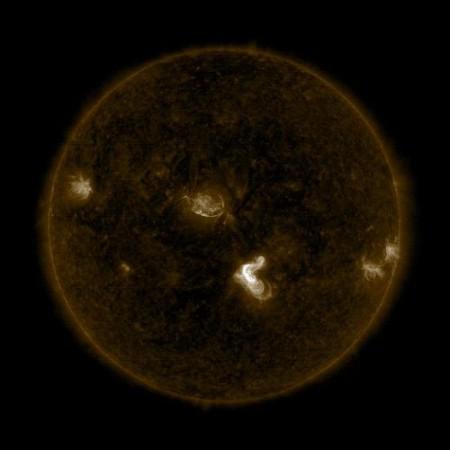
A new stunning image of a mid-level solar flare has been released by NASA.
Here's all you need to know about the Solar Dynamics Observatory satellite:
1. The Sun emitted the mid-level solar flare which was captured on September 4, 2017 at 4:33 EDT by NASA's Solar Dynamics Observatory (SDO).
ALSO READ: Second massive black hole discovered in Milky Way Galaxy; 5 things to know
2. The Sun is being constantly watched by the Solar Dynamics Observatory satellite. It takes images of the strong solar radiation bursts. The bursts are not likely to impact humans on Earth despite the radiations being harmful but it can impact the layer of the atmosphere where the GPS and communications signals travel.
3. The flare spotted by SDO this time is classified as M5.5 class flare. The flares belonging to the M-class are a one-tenth size of the most powerful flares and are referred to as the X-class flares. The number of the flare reveals more about its strength. For example, an M2 flare is twice more intense than M1 flare.
ALSO READ: World's most powerful X-ray laser launched in Germany: Top things to know about European XFEL
4. The SDO has been observing the solar surface since 2010 and it is part of a program called Living With a Star (LWS). The program aims to increase the scientific understanding and address features linked to the Sun-Earth system which can have a direct impact on the life forms present on Earth.
5. Every year the SDO observes various lunar transits from its orbit 3,000 miles (4828.032 km) above Earth. You can get updates regarding how the solar flares impact the weather forecasts, alerts, watches as well as the warnings at spaceweather.gov.

















